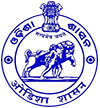Research Programme
WRTC is well equipped to facilitate research in the field of molecular biotechnology, microbiology, marine biology, biogeochemistry, hydrological modeling and GIS and remote sensing, advanced oceanography, and bathymetry. The output from the studies would be incorporated in to the ecological and mathematical modeling with a decision support system for the lake. The location, facilities and accessibility to Chilika Lake makes the centre most suitable for wetland research. Research programs in the area of biogeochemistry, lake monitoring, plankton, benthos, and fishery diversity are ongoing at WRTC. The instrumentation lab is equipped with high value instruments in order to cater to the needs of study biogeochemistry of lagoon sediment and water. The facilities are extensively used for advanced research on biogeochemistry of wetlands, estuarine and coastal ecosystems. This facility is also extended to external organizations, mainly for M. Sc. dissertation, Ph.D. work and experimental studies on Chilika lagoon. Following studies are currently ongoing 1. Study on the physicochemical parameters of Chilika lagoon through monthly lake monitoring 2. Study on spatio-temporal distribution of sensitive trace metal in sediment and their geochemical fractions in Chilika lagoon 3. Estimation of budget of nutrient and their biogeochemical cycle in Chilika lagoon 4. Assessment of petroleum hydrocarbon (PHC) in Chilika 5. Study on nutrient uptake by seaweeds and macrophytes of Chilika
Lake Monitoring Program
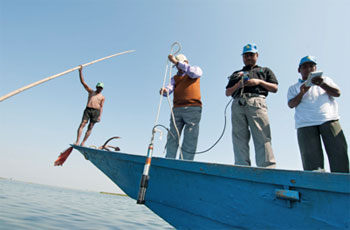 CDA under the project “Water quality monitoring of Chilika Lake” is conducting monthly survey of physical, chemical, and biological parameters of lake. Water and sediment samples are collected from 30 pre-fixed stations and are analyzed on board for pH, temperature, salinity, conductivity, turbidity, and depth. In lab, samples are analyzed for nitrate, nitrite, phosphate and, dissolved oxygen. Among the biological parameters; diversity of benthic and planktonic communities, primary productivity and chlorophyll concentrations are recorded. From monitoring point of view, Chilika is very complex and heterogeneous ecosystem as there is high degree of spatial and temporal variability in the physiochemical parameters primarily due to constant tidal mixing of fresh and sea water. This monthly water quality report provides data on early warning biogeochemical indicators before changes are appeared at macro-fauna level.
CDA under the project “Water quality monitoring of Chilika Lake” is conducting monthly survey of physical, chemical, and biological parameters of lake. Water and sediment samples are collected from 30 pre-fixed stations and are analyzed on board for pH, temperature, salinity, conductivity, turbidity, and depth. In lab, samples are analyzed for nitrate, nitrite, phosphate and, dissolved oxygen. Among the biological parameters; diversity of benthic and planktonic communities, primary productivity and chlorophyll concentrations are recorded. From monitoring point of view, Chilika is very complex and heterogeneous ecosystem as there is high degree of spatial and temporal variability in the physiochemical parameters primarily due to constant tidal mixing of fresh and sea water. This monthly water quality report provides data on early warning biogeochemical indicators before changes are appeared at macro-fauna level.
Recently, CDA has also installed state of the art real-time water quality monitoring system (data buoy) at 10 strategic locations in Chilika Lake. Each data buoy has sensors for salinity, temperature, turbidity, conductivity, dissolved oxygen, pH, chlorophyll, and blue green algae. These data buoys transmit data every 15 min on real-time basis to modeling cell located at Wetland Research and Training Centre. In the modeling cell, data is analyzed closely to reveal any spatial and temporal pattern in context to the health status of lake.
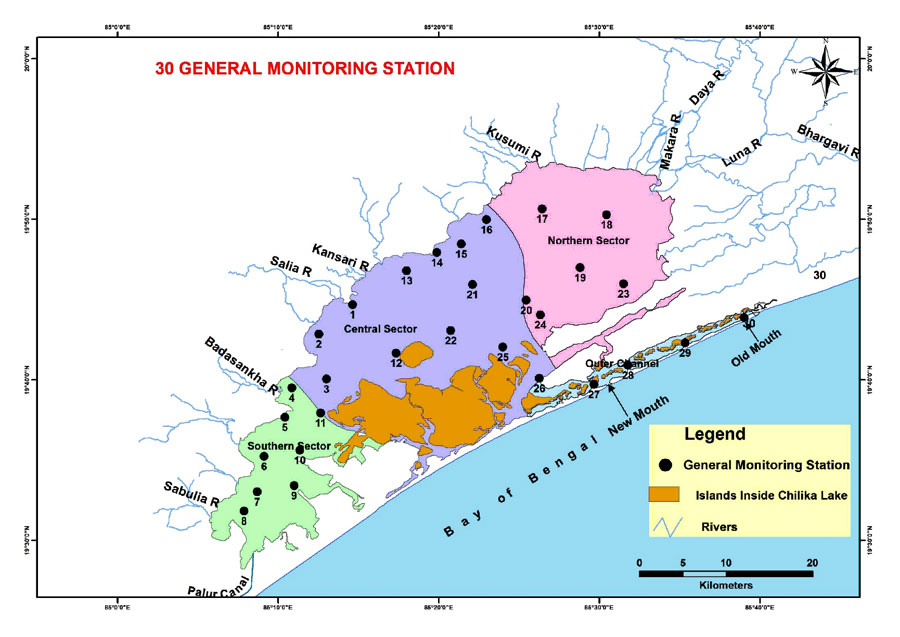
CDA has a long term desire to use the scientific data collected during lake health monitoring program in a way that is easily understandable to costal community and policy makers. With this objective, CDA has collaborated with Institute for Ocean Management, National Centre for Sustainable Coastal Management, and University of Maryland to initiate the development of a “Chilika Ecosystem Health Report Card”. This report card will be a very simple and timely method to report the health of Chilika Lake on annual basis. Quantitative assessment of lake health will be done based on (i) water quality indicators (dissolved oxygen, transparency, nutrients) and (ii) biotic indicators (chlorophyll, planktons, aquatic weed, sea grasses). Score will be given to each indicator based on the threshold values which will be then combined for both indices to calculate health report card grades.
Real-time water quality monitoring through data buoy
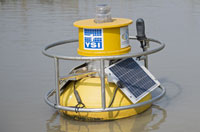 CDA has also installed state of the art real-time water quality monitoring system (data buoy) at 10 strategic locations in Chilika Lake. Each data buoy has sensors for salinity, temperature, turbidity, conductivity, dissolved oxygen, pH, chlorophyll, and blue green algae. These data buoys transmit data every 15 min on real-time basis to modeling cell located at Wetland Research and Training Centre. In the modeling cell, data is analyzed closely to reveal any spatial and temporal pattern in context to the health status of lake. The database will be used for ecological modeling of the lagoon in collaboration with ICMAM.
CDA has also installed state of the art real-time water quality monitoring system (data buoy) at 10 strategic locations in Chilika Lake. Each data buoy has sensors for salinity, temperature, turbidity, conductivity, dissolved oxygen, pH, chlorophyll, and blue green algae. These data buoys transmit data every 15 min on real-time basis to modeling cell located at Wetland Research and Training Centre. In the modeling cell, data is analyzed closely to reveal any spatial and temporal pattern in context to the health status of lake. The database will be used for ecological modeling of the lagoon in collaboration with ICMAM.
Biology Lab
Current research in the Biology lab is aimed to understand the interaction of benthic and plankton communities with environmental factors. In this research, spatiotemporal variations in benthic and plankton communities are studied on monthly basis. The main objective of this research is to generate information on monthly variation in diversity, composition and abundance of phytoplankton and zooplankton and identify indicator species if any to predict the ecological status of the lagoon
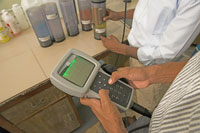 CDA is conducting an ecological assessment of Nalabana; a nursery and feeding ground for many fish and prawn species. The abundance of post larvae, spawners with ripe ovary, fertilized eggs etc in the area as indicated that more than 11 species are using the area as a potential spawning ground. The species are Hemiramphus limbatus, Datnioedes polota, Etroplus suratensis, Osteogeneiosus militaris, Mystus gulio, Oryzias dancena, T. biaculeatus, Puntius ticto, A. panchax, Ichyocampus carce and Gobiids. Through exhaustive field based survey, every month data on ecological parameters such as fish juveniles, larvae, and availability of food supplies (zooplanktons, benthic community, and aquatic vegetation) is collected. This study aims to educate fishermen community about the role of Nalaban in recruitment of fisheries and the significance of protecting this island from fishing activities.
CDA is conducting an ecological assessment of Nalabana; a nursery and feeding ground for many fish and prawn species. The abundance of post larvae, spawners with ripe ovary, fertilized eggs etc in the area as indicated that more than 11 species are using the area as a potential spawning ground. The species are Hemiramphus limbatus, Datnioedes polota, Etroplus suratensis, Osteogeneiosus militaris, Mystus gulio, Oryzias dancena, T. biaculeatus, Puntius ticto, A. panchax, Ichyocampus carce and Gobiids. Through exhaustive field based survey, every month data on ecological parameters such as fish juveniles, larvae, and availability of food supplies (zooplanktons, benthic community, and aquatic vegetation) is collected. This study aims to educate fishermen community about the role of Nalaban in recruitment of fisheries and the significance of protecting this island from fishing activities.
Modeling Lab
 Modeling Lab at WRTC is closely monitoring the dynamic and stability of inlets. A study on the geomorphology of the inlet due to long shore transport over a wide range of space and time scales has been conducted by CDA. A monthly inlet configuration survey is being conducted to monitor the shifting of inlet as well as orientation and width changes. On 3rd September 2012 an inlet was naturally opened just adjacent south to Dalabali sand spit . Another mouth was opened south to Dhalabali inlet after the Phailin hit Chilika coast on 12th October 2013 and the inlet was named as Phailin Inlet. The recent study of geomorphological study of Chilika inlet will utilized for in Hydrodynamic Modelling of Chilika lagoon and the output generated will be helpful to know the circulation pattern of the lake, which ultimately will give input for any future sustainable integrated management action plan formulation.
Modeling Lab at WRTC is closely monitoring the dynamic and stability of inlets. A study on the geomorphology of the inlet due to long shore transport over a wide range of space and time scales has been conducted by CDA. A monthly inlet configuration survey is being conducted to monitor the shifting of inlet as well as orientation and width changes. On 3rd September 2012 an inlet was naturally opened just adjacent south to Dalabali sand spit . Another mouth was opened south to Dhalabali inlet after the Phailin hit Chilika coast on 12th October 2013 and the inlet was named as Phailin Inlet. The recent study of geomorphological study of Chilika inlet will utilized for in Hydrodynamic Modelling of Chilika lagoon and the output generated will be helpful to know the circulation pattern of the lake, which ultimately will give input for any future sustainable integrated management action plan formulation.
Biotech Lab
Biotech lab was recently established through the support received from ICZMP is equipped with instruments for carrying our molecular biology related experiments. This lab was needed to harness the biotechnological potential of microbial resources and understand the ecosystem functioning and biogeochemical processes with respect to specific microbial groups. State of the art facilities such as PCR, real-time PCR, gel documentation system, BIOLOG, are available for use in various projects related to study of microbial communities in the Chilika lagoon. Biotech lab also supports various students from Berhampur University and KIIT University for their M.Sc. dissertation and summer training program. With the research infrastructure developed, following projects are ongoing in the biotech lab:
- Establishment of a Chilika Microbial Culture Collection (CMCC) and bioprospecting through biotechnology
- Spatiotemporal investigation of phytoplankton communities through a combination of traditional microscopic and modern molecular tools.
- Molecular ecological analysis of microbial communities by community-level physiological profiling (CLPP) and high-throughput sequencing
- Molecular functional diversity of specific microbial groups involved in nitrogen and carbon cycling
CDA-ICZMP supported studies
The Chilika Development Authority (CDA) in its ongoing mission to protect lake genetic diversity and promote wise-use of bio-resources has implemented several long-term research studies that are sponsored by World Bank under Integrated Coastal Zone Management project. These research activities are commissioned in collaboration with premier institutes of India such as CIFRI, BNHS, IISER, RPRC, and KIIT University. These studies are focused on ecologically and economically important component of Lake Ecosystem such as fishes, birds, macrophytes, benthos, and microbial communities of Chilika Lake ecosystem.
- Studies on the biology and ecology of Chilika Lake fisheries:
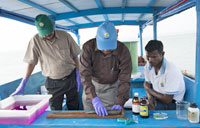 CDA is pursuing a collaborative study with Central Inland Fishery Research Institute (CIFRI) to collect data on following specific objectives.
CDA is pursuing a collaborative study with Central Inland Fishery Research Institute (CIFRI) to collect data on following specific objectives.- Post-restoration assessment of fishery resources with regard to ecology, species abundance, biomass, diversity across 13 stations
- Monitoring of physicochemical parameters , heavy metals, and pesticides
- Evaluation of commercial fish catches regarding production trends, yield potential, recruitment, and stock assessment
- Targeted fish population biology studies on major economic species
- Develop a framework for sustainable management of fisheries resources of the lake
- Assessment of macrophyte biodiversity in Chilika lagoon and its shoreline:
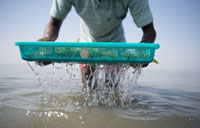 A joint study by CDA and Regional Plant Resource Centre (RPRC) initiated a comprehensive investigation on mapping of macrophytes of lake water and terrestrial plants growing on shorelines and islands to provide data on following objectives:
A joint study by CDA and Regional Plant Resource Centre (RPRC) initiated a comprehensive investigation on mapping of macrophytes of lake water and terrestrial plants growing on shorelines and islands to provide data on following objectives:- resource inventory, quantitative assessment, and mapping of aquatic macrophytes and terrestrial plants in and around the lake
- analysis of the diversity, distribution, density of macrophytes in context to physicochemical properties of Lake Ecosystem
- assessment of yield and productivity of macrophytes and their economic contribution to the livelihood of local people
- identification and study of the extent of distribution and spread of invasive weed species.
- appropriate conservation and management strategies, stock assessment, and habitat improvement
- Microbial communities and bioprospecting of Chilika Lagoon:
Recently, CDA and KIIT School of Biotechnology have started a systemic approach to culture and characterize the bacteria from different sectors of lake.
- Documentation and conservation of bacterial resources
- Spatial and temporal dynamics of bacterial communities in context to nutrient cycling
- Isolation of novel bacteria and enzymes useful in biotechnology industries
- Monitoring of pollution and fecal indicator bacteria
- Monitoring waterbird population and habitat assessment in Chilika Lake:
 CDA in collaboration with Bombay Natural History Society (BNHS) has commissioned a study to monitor bird ecology with special focus on following specific objectives
CDA in collaboration with Bombay Natural History Society (BNHS) has commissioned a study to monitor bird ecology with special focus on following specific objectives- Documentation of species wise population of waterfowl and waders in different sectors of Chilika lake on fortnightly basis.
- Monitoring of benthic fauna, aquatic flora and physico-chemical parameters has been completed for the season.
- Disease surveillance for monitoring of Avian Influenza.
- Bird ringing to study the movement pattern of water birds is in progress.
- Habitat improvement for bird congregation sites
- Training on water bird identification, bird migration, and disease surveillance was given to the Forest Officials.
- Diversity and ecology of benthic faunal assemblages in Chilika Lake:
CDA in collaboration with IISER Kolkata has started taxonomic characterization of benthic fauna from four ecological sectors of Chilika lagoon. This study has following specific objectives:
- Characterization of diversity and ecology of macro and meio-faunal abundance
- Identification of ‘indicator taxa’ for monitoring the sediment and water quality of lake
- Develop a monograph for key benthic macro faunal and meio-faunal groups found in the Lagoon.
